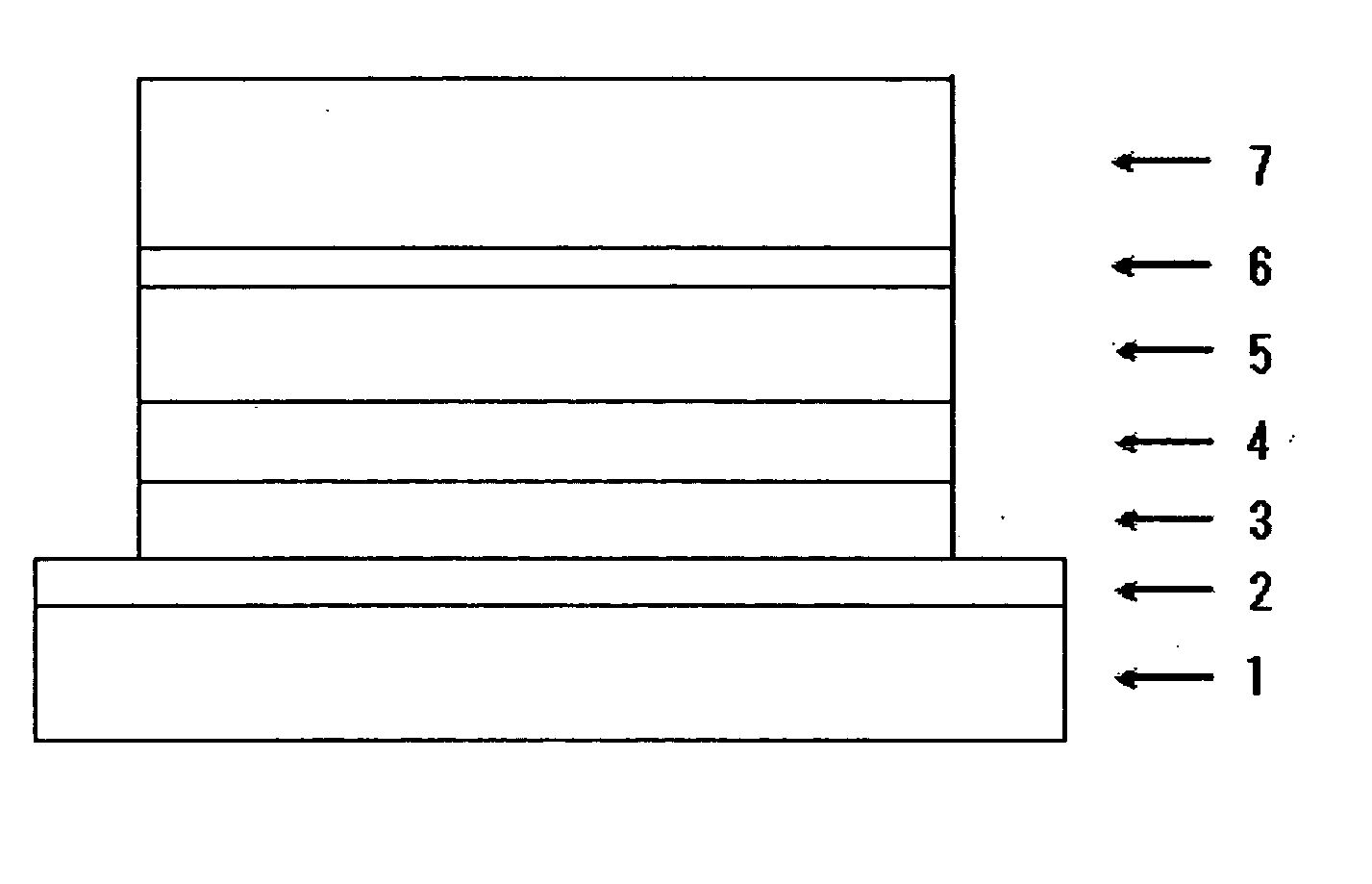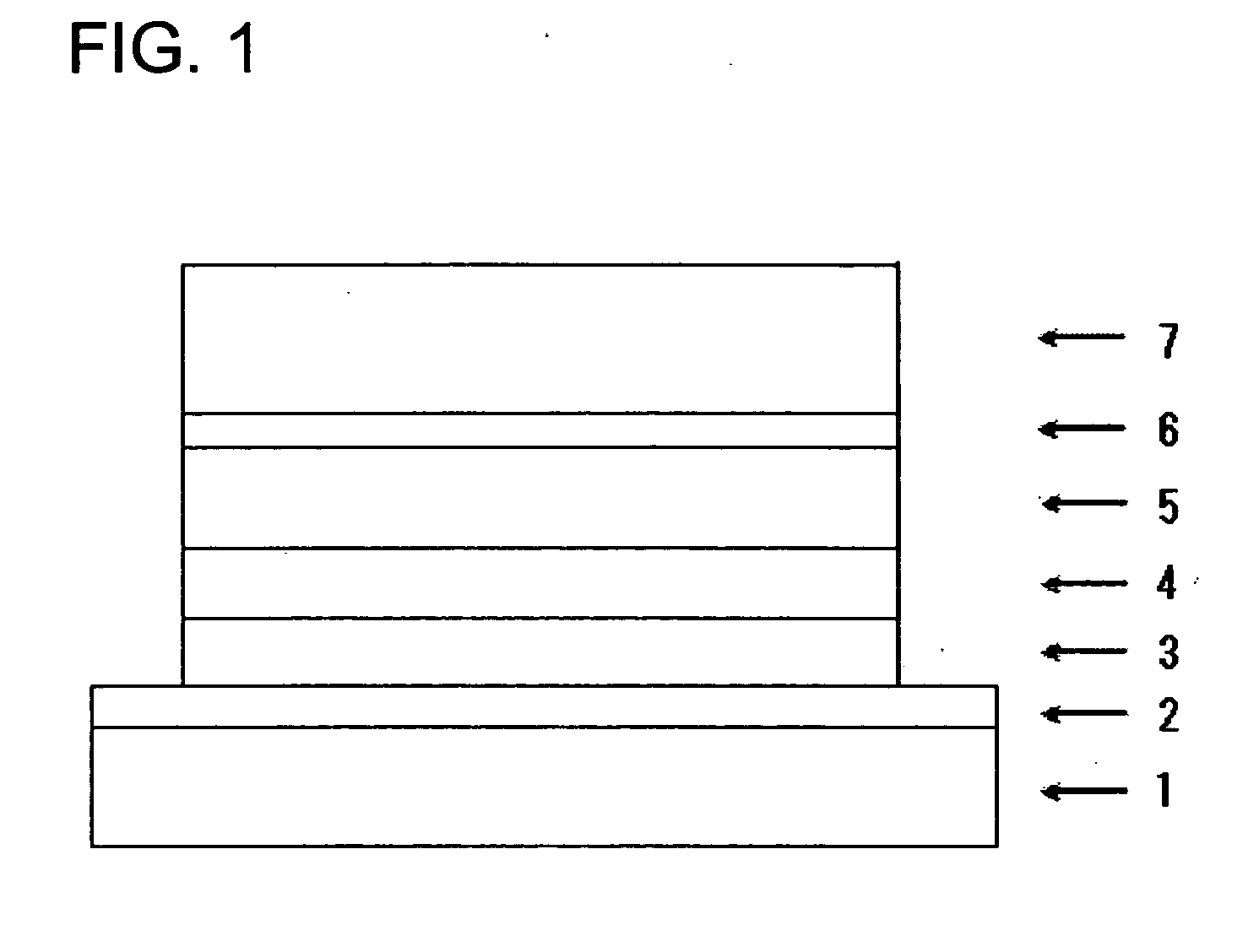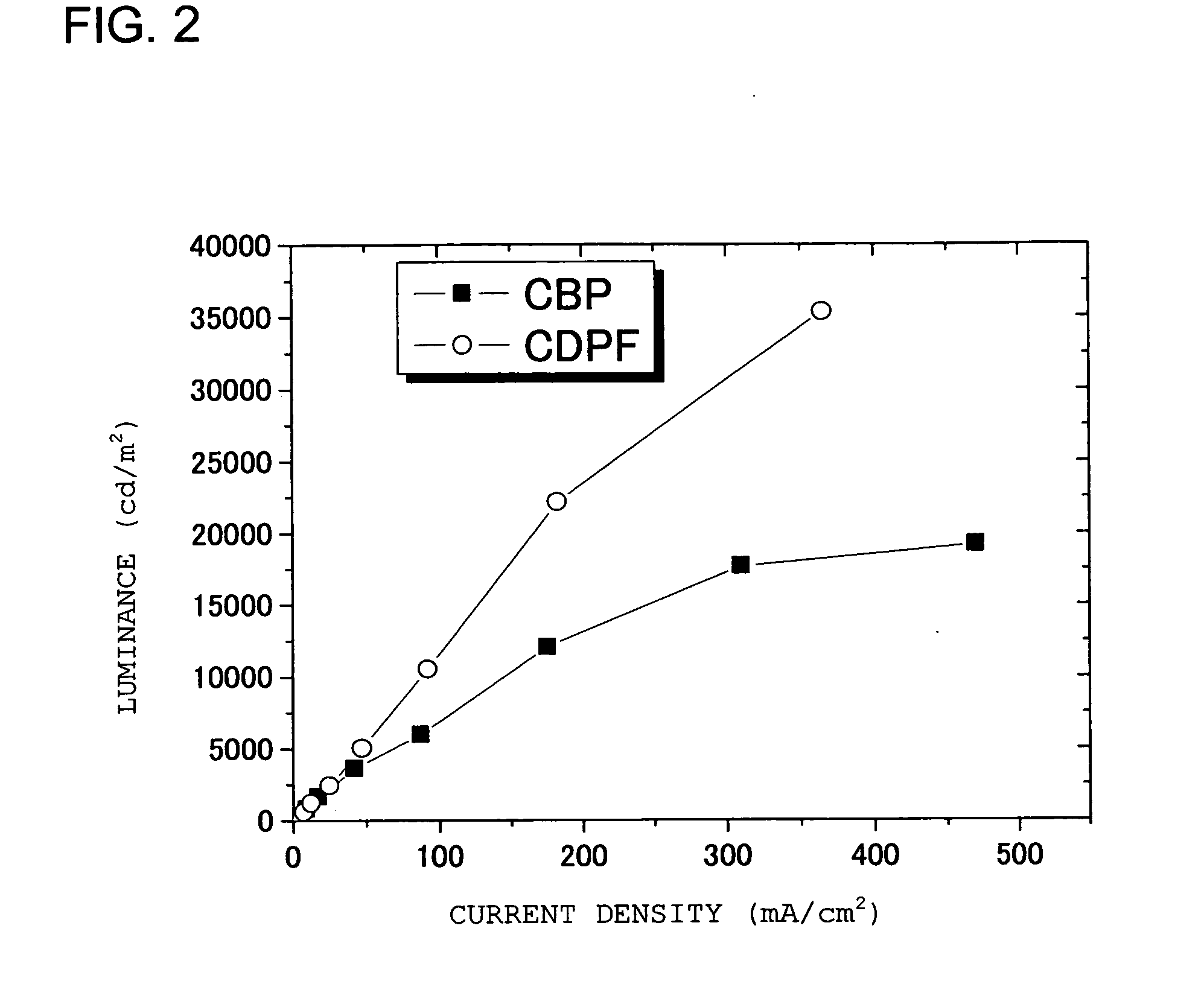Carbazole Derivative Containing Fluorene Group and Organic Electroluminescent Element
a derivative and organic electroluminescent technology, applied in the direction of discharge tube luminescnet screen, discharge tube/lamp details, organic chemistry, etc., can solve the problems of poor stability in a thin film state and unsatisfactory device characteristics, so as to improve the performance of the conventional organic electroluminescent device and improve the luminance. , the effect of high durability
- Summary
- Abstract
- Description
- Claims
- Application Information
AI Technical Summary
Benefits of technology
Problems solved by technology
Method used
Image
Examples
example 1
Synthesis of 9,9-bis(4-carbazolylphenyl)fluorene (hereinafter referred to as CDPF) (2)
[0051] 8.9 g of 9,9-bis(4-iodophenyl)fluorene, 5.5 g of carbazole, 4.8 g of potassium carbonate, 0.5 g of copper powder and 8 ml of diphenyl ether were heated at 240° C. under a nitrogen atmosphere to react for 4 hours. After completion of the reaction, 300 ml of toluene was added, followed by stirring for 1 hour. The mixture was heat filtered, and the filtrate was condensed to dryness to obtain a crude product. The dried crude product was purified by column chromatograph to obtain 3.7 g (yield 38%) of CDPF. The product was identified with NMR analysis. The results of 1H-NMR analysis were as follows. 8.121 ppm (4H), 7.872 ppm (2H), 7.602 ppm (2H), 7.543-7.493 ppm (8H), 7.470-7.406 ppm (4H), 7.434 ppm (4H), 7.383 ppm (4H), 7.263 ppm (4H)
example 2
Synthesis of 9,9-bis(4-carbazolyl-3-methylphenyl)fluorene (hereinafter referred to as CDMPF) (3)
[0052] 4.6 g. of 9,9-bis(4-iodo-3-methylphenyl)fluorene, 2.8 g of carbazole, 2.5 g of potassium carbonate, 0.2 g of copper powder and 4 ml of n-dodecane were heated at 220° C. under a nitrogen atmosphere to react for 6 hours. After completion of the reaction, 200 ml of toluene was added, followed by stirring for 1 hour. The mixture was heat filtered, and the filtrate was condensed to dryness to obtain a crude product. The dried crude product was purified by column chromatograph to obtain 1.7 g (yield 38%) of CDMPF. The product was identified with NMR analysis. The results of 1H-NMR analysis were as follows. 8.130 ppm (4H), 7.868 ppm (2H), 7.625 ppm (2H), 7.443 ppm (2H), 7.389 ppm (4H), 7.362 ppm (2H), 7.344 (4H), 7.285 ppm (4H), 7.233 ppm (2H), 7.060 ppm (4H), 1.883 ppm (6H). Further, the results (ppm) of 13C-NMR analysis were as follows. 150.538, 146.145, 140.945, 140.147, 136.946, 134....
example 3
[0056] A glass transition point was measured with a differential scanning calorimeter DSC (a product of MacScience) on CDPF (2), CDMPF (3) and CBP as a comparison. The measurement results were as shown below, and it was confirmed that the compound of the present invention has high glass transition point.
CDPFGlass transition point: 185° C.CDMPFGlass transition point: 164° C.CBPGlass transition point: Not observed
PUM
| Property | Measurement | Unit |
|---|---|---|
| luminance | aaaaa | aaaaa |
| thick | aaaaa | aaaaa |
| current density | aaaaa | aaaaa |
Abstract
Description
Claims
Application Information
 Login to View More
Login to View More - R&D
- Intellectual Property
- Life Sciences
- Materials
- Tech Scout
- Unparalleled Data Quality
- Higher Quality Content
- 60% Fewer Hallucinations
Browse by: Latest US Patents, China's latest patents, Technical Efficacy Thesaurus, Application Domain, Technology Topic, Popular Technical Reports.
© 2025 PatSnap. All rights reserved.Legal|Privacy policy|Modern Slavery Act Transparency Statement|Sitemap|About US| Contact US: help@patsnap.com



